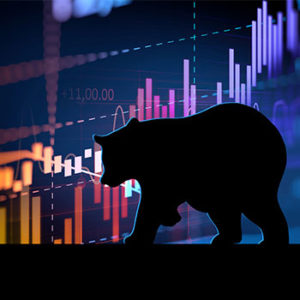Since the end of the bear market related to the “Great Financial Crisis” (March 2009), the rise in the markets have been historic. We certainly experienced some downturns over this period of time. During 2011 and 2018, the S&P 500 Index came very close to entering a bear market (Yahoo Finance), which is typically defined as a 20% or greater pullback in the broad-based S&P 500 Index. However, the market always bounced back and continued higher.
Now in today’s market, from its closing peak of 4,796.56 on January 3, the S&P 500’s most recent closing bottom of 3,900.79 on May 19 translates into a peak-to-trough loss of 18.68% (MarketWatch).
What fueled the rise in stocks over the last decade and has anything changed today?
During the 2010s, interest rates were extremely low; the Fed was buying Treasury bonds during the early part of the decade (popularly called quantitative easing or QE); inflation was low; and the economy was expanding at a modest, if unimpressive, pace. That economic expansion fueled a rise in corporate profits.
When the Fed began to raise rates, the shift in policy was gradual.
While stocks never rise in a straight line, the economic fundamentals created a strong tailwind for equities.
What’s going on today?
Today, the economy is expanding, and corporate profits are rising, according to Refinitiv. But an upbeat Q1 profit season failed to stem the latest slide in stocks. Why? We believe you can point to a shift in some of the fundamentals.
First, let’s start with the Federal Reserve. During prior rate-hike cycles, such as the early 2000s and the second half of the 2010s, the Fed took great pains to reassure investors that increases would be “measured” or “gradual.”
The investor-friendly tone has changed somewhat. The Fed is now clearly worried about inflation similar to the early 1980’s. In hindsight, the Fed should have started tightening the monetary policy with rate hikes last year. It didn’t. It insisted that last year’s rise in inflation was “transitory.” It wasn’t.
In response to the sharp rise in inflation, the Fed is being forced to play catch-up.
In an interview last month, Fed Chief Powell said, “What we need to see is inflation coming down in a clear and convincing way, and we’re going to keep pushing until we see that.” It’s definitely a tougher tone.
We want a return to price stability, and comments like that strongly suggest job #1 at the Fed is price stability. But over the shorter term, an aggressive policy to rein in inflation increases economic uncertainty and angst among investors.
In addition to rate hikes, the Fed will also let some of the maturing bonds it holds run off its balance sheet without replacing them. It’s the opposite of QE, and it’s called QT—quantitative tightening. As with rate hikes, it’s a shift away from the Fed’s easy money policy.
While the Fed should take some responsibility for today’s high inflation, we won’t blame it entirely on them. Excessive fiscal stimulus encouraged a consumer-led buying binge (and a fast return to full employment), and supply chain woes that limited the availability of some goods are part of the problem, too.
Further, severe labor shortages have lifted wages, and businesses are passing along the higher costs.
Market volatility is also being exacerbated by Russia’s invasion of Ukraine, which has pushed up energy prices and appears poised to slow global growth. Recent lockdowns in China have aggravated supply chain issues.
Lastly, whether it is warranted or not, odds of a recession have risen, which is adding to uncertainty.
Taking the stairs up and the elevator down
Stocks historically have a long-term upward bias, but downturns can be swift and uncomfortable. We understand that. But a review of the long-term data is encouraging.
The Schwab Center for Financial Research analyzed S&P 500 data going back to 1966.
While we know that past performance doesn’t guarantee future results, Schwab found that the average bear market lasted 446 days (including weekends/holidays). The average bear market decline was 38.4%.
Here is the good news. Bull markets averaged 2,069 days and returned an average of 209.2%.
Yet, market timing is exceedingly difficult.
“I never have the faintest idea what the stock market is going to do in the next six months, or the next year, or the next two,” legendary investor Warren Buffett once quipped. He’s right.
A few get lucky from time to time, but no one can consistently call market tops and market bottoms. Nonetheless, we believe that clarity on inflation and rate hikes would inject a more positive tone into sentiment.
Successful investors tend to be more disciplined. They avoid letting excessive optimism or pessimism guide their decisions.
We know times like these can be difficult. If you have questions or would like to talk, we are only an email or phone call away.
June 2022
Content in this material is for general information only and not intended to provide specific advice or recommendations for any individual. All performance referenced is historical and is no guarantee of future results. All indices are unmanaged and may not be invested into directly. No strategy assures success or protects agains loss. Investing involves risk including loss of principal.

